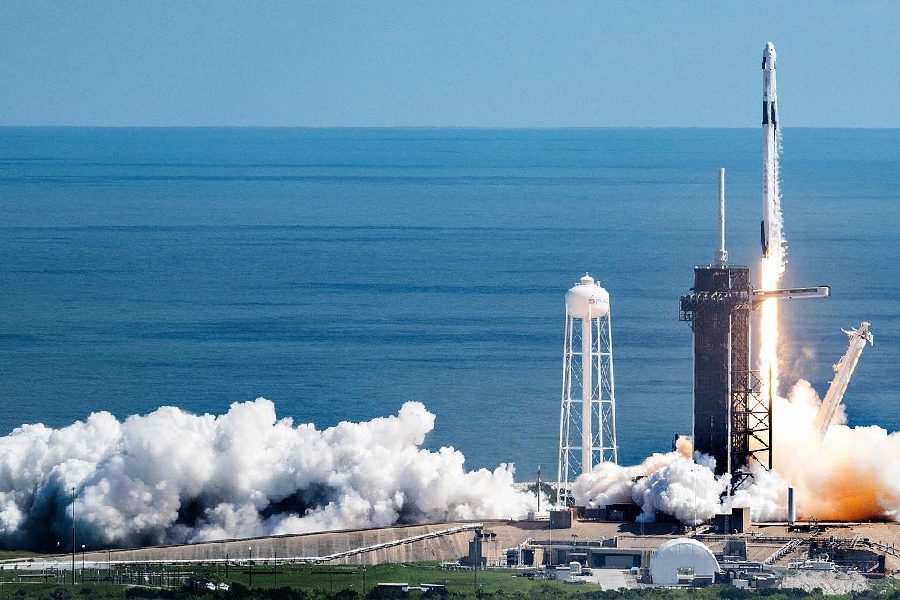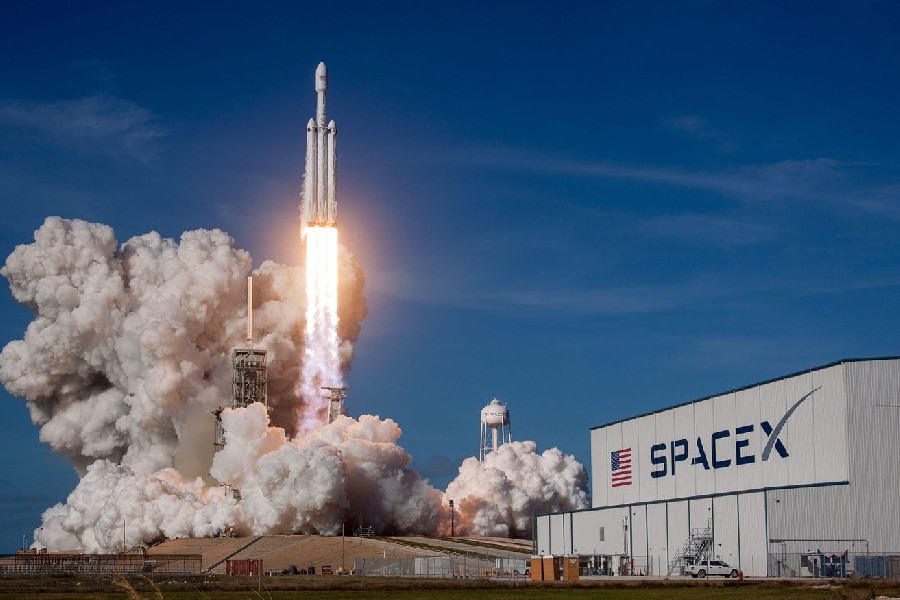For decades, space exploration meant primarily government-funded agencies designing, building, and operating ambitious robotic missions or astronaut spaceflight programs. Yet the past few years witnessed stunning new private space companies aiming to transform access and capabilities for both orbital and deep space activities through innovative models. Read on to discover more about private space companies, those daring startups forging novel paths among the stars.
While some focus on space tourism, others aim to expand science and communications in orbit, extract asteroid resources, or establish lunar and Mars footholds over the long run.
As we look at leading space companies and their visions, we see a theme – they all aim to push boundaries beyond Earth whether through tourism, mining asteroids, or settling on Mars someday.
The emerging era of space exploration appears significantly more commercially dynamic and inclusively collaborative than anyone could have anticipated just a generation.
Private Space Companies
SpaceX, founded by Elon Musk, stands out for its groundbreaking achievements in reusable rocket technology and ambitious plans for interplanetary travel with the Starship spacecraft.
Blue Origin, led by Jeff Bezos, focuses on reusable rocket development for both suborbital and orbital spaceflight, aiming to support lunar exploration. Virgin Galactic, founded by Richard Branson, specializes in commercial space tourism using the SpaceShipTwo suborbital spaceplane.
Other notable companies include Rocket Lab, known for its small satellite launch services, OneWeb for global satellite internet, and Relativity Space, pioneering 3D printing technology for rocket manufacturing. These companies contribute significantly to the evolving landscape of space exploration and technology.

Chronological Development of Private Space Companies
Early pioneers (Pre-2000)
Well before the dotcom boom, some bold startups like PanAm, SpinLaunch, and Orbital Sciences attempted early suborbital and small satellite launches with limited success. They faced huge technical obstacles and lacked needed infrastructure to support commercial space ventures prior to the 2000s.
While those early entrepreneurs’ ambitions exceeded feasible capabilities at the time, their pioneering attempts laid an exploratory foundation of knowledge. This served as precursors to today’s rapidly advancing private space industry.
SpaceX and the New Era (2002-present)
The hugely influential founding of SpaceX in 2002 by tech entrepreneur Elon Musk totally changed views on whether private rocket companies could succeed commercially.
Drawing from Silicon Valley’s innovative culture, SpaceX focused intensely on lean manufacturing and efficient engineering. This level of efficiency was unheard of among huge longtime aerospace companies like Boeing or Lockheed Martin previously.
Despite negative outlooks, an ambitious SpaceX raced to upgrade its small Falcon 1 rockets to much larger ones capable of supporting flying astronauts within the course of ten years. They won major NASA and Pentagon launch contracts by dramatically cutting launch prices.
This stubborn determination to prove capabilities opened up confidence that more private companies could succeed in space exploration besides just traditional aerospace firms. It started attracting enormous investor funding and engineering talent eager to advance Musk’s visionary plans.
Virgin Galactic
A futuristic tourism venture
British entrepreneur Sir Richard Branson pioneered one of the most publicly renowned private space firms through his fun-focused Virgin brand empire. Founded in 2004 as Virgin Galactic, the company’s goal centered on an entirely new tourism niche– providing wealthy passengers with brief suborbital rocket flights.
These flights would cross the edge of space for several minutes. During this time, passengers would experience dazzling views of Earth and weightlessness.
Customized space planes
The company built a specialized spacecraft dubbed SpaceShipTwo. This would launch from midair after release by a mothership Eve carrier jet. It would then glide back down similar to old Space Shuttle orbiters minus going full orbital speeds of 17,500 mph.
The craft is designed to carry up to 8 passengers and 2 pilots to altitudes over 50 miles. This provides panoramic views of Earth and a few minutes of zero gravity. It does so by entering the boundaries of outer space without completing a full orbit.
Branson’s audacious timeline
Over two decades, Virgin Galactic wound a meandering path to commercial passenger service. This path went through tragic test flight losses but also headline-grabbing prototype demonstrations before finally beginning regular operations in 2022.
Sir Richard Branson’s ambitious timeline suffered major setbacks. However, it culminated in his lifelong dream of opening access to space tourism through expensive yet pioneering suborbital flights.
Blue Origin
Founded by Amazon billionaire Jeff Bezos in 2000, Blue Origin stands as a pioneering developer of reusable rocket and space systems technology seeking to dramatically lower launch costs and enable human space exploration goals.
Their motto “Gradatim Ferociter” is Latin for “Step by Step, Ferociously”, explaining the bold ambitions of individuals in ultimately enabling millions to live and work in space for the long term by first reducing spaceflight costs through reusable rockets.
Revolutionizing reusable rockets
Bezos harbored a lifelong passion for space travel and exploration. With Amazon’s success, he self-funded Blue Origin’s forays into rocket innovations. These innovations centered around vertical takeoff and landing vehicles capable of returning for further reuse post-launch.
After developing multiple technology testbed demonstrators, the firm debuted the massive yet reusable heavy lift New Glenn rocket. This rocket is intended for a spectrum of commercial launch roles during the 2020s and beyond.
Ambitious visions ahead
Looking farther ahead, Blue Origin also conceptualized imaginative habitats. These habitats would be able to support families, agriculture, and communities living in orbit and on surfaces like the Moon.
The goal is to enable access for all those passionate about expanding an Earthway of life across the solar system. Bezos believes reducing space launch and settlement costs can seed new epochs of prosperity, supporting creativity across worlds and kindling possibilities not yet imagined.

Axiom Space
Commercializing low Earth orbit
Founded in 2016, Houston-based Axiom Space set out to construct the first private commercial space station in low Earth orbit. This will be a successor to the government-funded International Space Station, retiring this decade.
Beyond continued microgravity research access, Axiom envisions space tourism stays. It also envisions helping establish essential orbital infrastructure for an expansive ecosystem of commercial activity from 2030 forward.
Key partnerships
In a short period, Axiom secured crucial partnerships. These partnerships include support from NASA and private funding, as well as agreements with SpaceX for transport of modules and humans. This will use flown Falcon 9 rockets and Crew Dragon capsules.
These connections provide vital technical experience, resources, and flight-proven systems to enable Axiom’s ambitious vision.
Build up of orbital outpost
The company already completed initial station module designs and proposals for a phased attach plan to the ISS, followed by full separation as an independent platform. Two operational flights have already demonstrated private astronaut flights, commencing planning for the first module launch and connection around 2024.
The outpost called Axiom Base One will start with a node module added to the ISS. It will then expand to include laboratories, crew quarters, large-scale manufacturing facilities, and space for tourists.
Leading the orbital economy
Axiom Space has made swift progress, with several contracted crewed missions upcoming. This constitutes a tangible headway toward economical, flexible-use commercial space stations.
Axiom is leading continuous orbital outpost buildup and innovative business models. Their accomplishments highlight the vast emerging landscape for LEO commercialization across many nations and partners over the coming years.
Bigelow Aerospace
Founded in 1998, maverick firm Bigelow Aerospace pioneered breakthrough expandable module technology. This technology is designed for orbital and deep space habitats. The founder, Robert Bigelow, initially made his fortune in commercial real estate.
Bigelow licensed NASA TransHab inflatable prototype patents. These patents were canceled under budget cuts. Bigelow used them to craft large yet lightweight shielded habitat spaces. These habitats far surpass metallic cans in volume efficiency at comparable protective performance.
Innovating habitat design
In 2006 and 2007, under emerging NASA commercial cargo contracts, Bigelow launched initial small modules Genesis I and II to validate hardened expandable habitat operations in low Earth orbit.
Genesis, an experimental expandable space habitat module, performed well in Earth orbit for over six years. As it orbited, it showed robustness. It also pioneered key techniques for large space habitats that can launch compactly and then greatly enlarge once deployed in space or on surface destinations.
These destinations could include the Moon, Mars, and even asteroids that serve as waypoints. Genesis demonstrated these key expandable habitat technologies that will be critical for future colonization efforts.
An orbital future
Bigelow has ambitious goals involving enormous expandable modules serving as space hotels in Earth orbit. They also aim for eventual colonization efforts across the inner solar system, supporting science, mining, manufacturing, and further settlement growth.
By reconsidering habitat design, their disruptive architecture innovations must play indispensable roles in our pioneering migration beyond Earth’s boundaries over generations ahead.

Current Developments in Private Space Companies
Industry trends
Several notable trends shape the rapidly evolving private space industry currently. There is a strong push towards developing reusable rocket technology to drastically lower launch costs and enable higher launch cadences.
SpaceX leads in recoverable boosters, while Relativity Space disrupts with 3D-printed rockets. There is also a surge in small satellite constellations leveraging lower-cost access to orbit, which is used for everything from telecommunications to Earth observation capabilities.
Advancements and collaborations
Many startups focus on space infrastructure. Areas like orbital fuel depots, space-based solar power, orbital refueling, space manufacturing, and habitat modules have gained incredible investment and made great technical progress.
Public-private partnerships also continue to gain prominence, with NASA relying on SpaceX to ferry astronauts and partners like Axiom Space adding commercial modules to the ISS. The Lunar Gateway project also heavily involves corporate collaborators to build capabilities for sustainable lunar access.
Cutting-edge advancements further include asteroid mining architectures being devised. There is also continued work on reusable spacecraft for space tourism by companies like Virgin Galactic and Blue Origin.
There are also early planning stages underway for potential commercial lunar and Mars bases by several major private space companies. The cross-pollination of ideas between new space firms and established aerospace giants continues to reinvigorate possibilities.
Conclusion
As we conclude this exploration, we’ve come to understand that private space companies are entrepreneurs dedicated to revolutionizing access to rocket launches, space tourism, orbital infrastructure, deep space exploration, and the pursuit of settlements beyond Earth.
We hope looking at the timeline, capabilities, visions, and latest advancements among firms like SpaceX, Blue Origin, Virgin Galactic, and Axiom Space has illuminated how they are reshaping boundaries beyond Earth’s atmosphere.
There is much speculation about hypothetical futures in space. However, major tangible progress is being made, from reusable rockets to contracted habitat modules. This demonstrates that space is becoming an important next frontier for commercial business.
This article aimed to convey that collaborative efforts to sustain human presence in the inner solar system may soon thrive. This would be through public agencies partnering with private space companies. These companies epitomize the thriving innovation ecosystems in the space sector.
